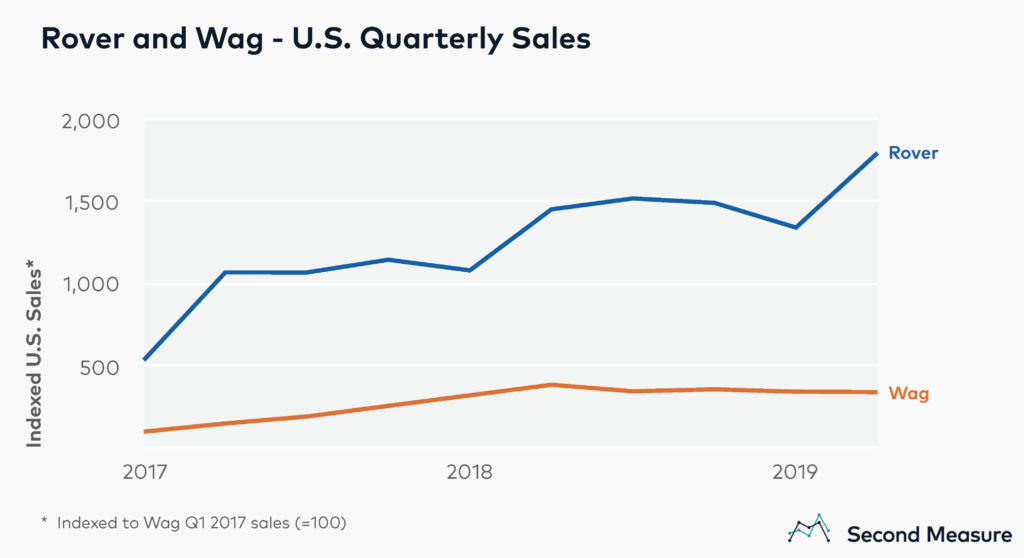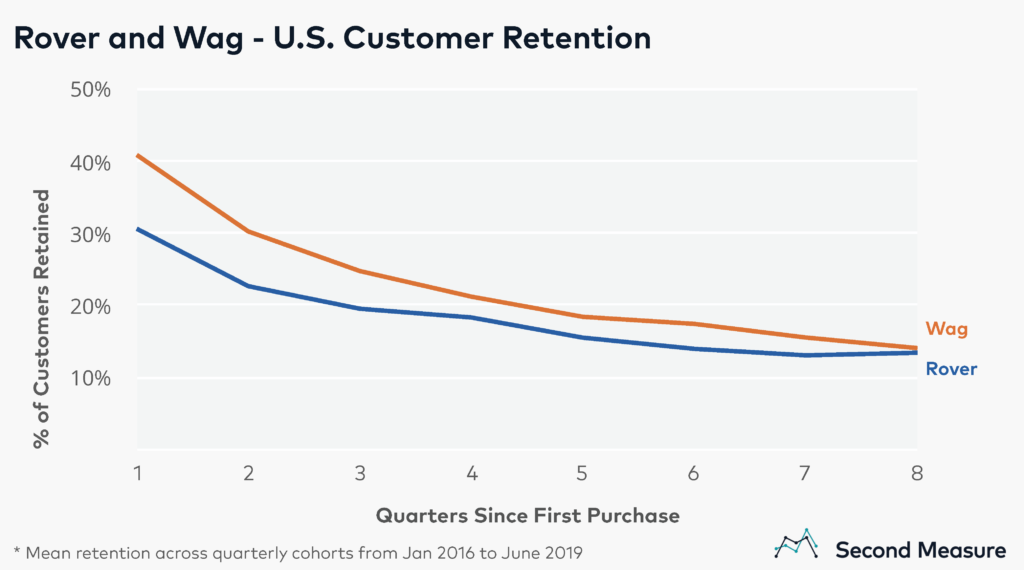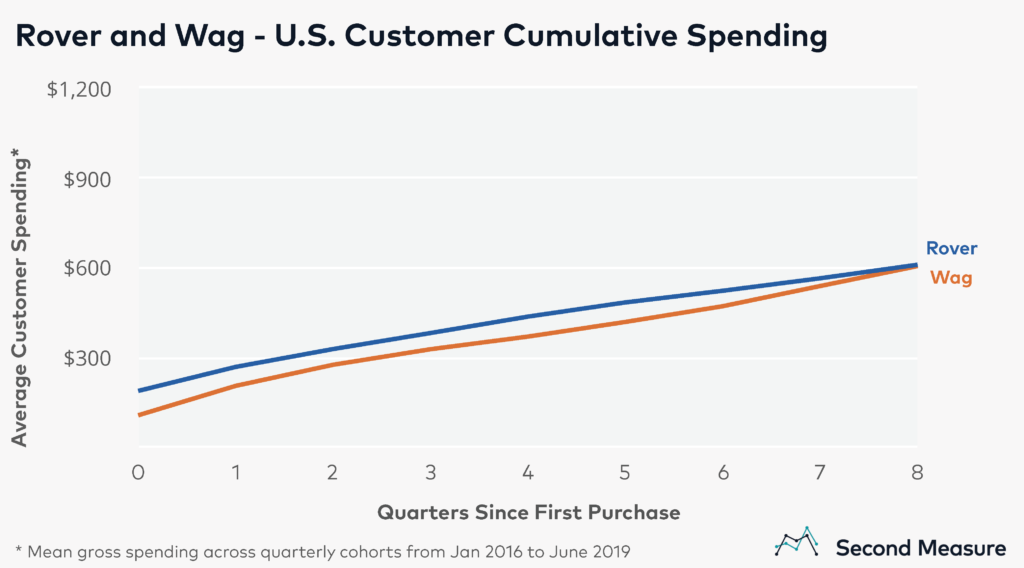NOTE: Bloomberg Second Measure launched a new and exclusive transaction dataset in July 2022. Our data continues to be broadly representative of U.S. consumers. As a result of this panel change, however, we recommend using only the latest posts in assessing metrics, and do not support referring to historical blog posts to infer period-over-period comparisons.
In today’s America, you can hire gig workers to do just about anything with a few clicks in an app. Dog walking is no exception. In the past three years, sales have more than tripled in this emerging industry.
The two major companies, Rover and Wag, operate in all 50 states. Both offer similar services, have raised more than $300 million in funding, and even have similar green paw-print logos. But when it comes to sales, Rover is running circles around Wag. You have to dig much deeper to find the bright spots buried in Wag’s numbers.

Rover, the older of the two services, saw U.S. sales nearly five times greater than Wag’s in the second quarter of 2019. What’s more, Rover’s sales were up 24 percent year over year, while Wag’s fell 12 percent. This is likely a disappointing result for the company that raised $300 million from SoftBank in 2018.
Rover often used for pet sitting; Wag for walks
Today, both Rover and Wag offer a full line up of doggie care services, including walking, sitting, boarding, and daycare. Rover also cares for cats. However, Rover’s original business model focused on overnight boarding, while Wag started as a dog walking company. Many of today’s clients, it seems, still use the companies’ primary services.
In the second quarter of 2019, the average charge for a Wag customer was a little less than $20, or about the cost of a walk. At Rover, the average transaction was nearly $105, which is in line with the cost of pet sitting.
There’s even more data to prove that the two companies are mostly used for different purposes. The average Wag customer made about 11 purchases in the second quarter. At Rover, it was just over two.
More of Wag’s customers come back
Although Rover vastly outperforms Wag in sales, data reveals Wag has better customer retention, especially in the short term. On average, 30 percent of Wag’s customers are using the service two quarters after their first booking, compared to 23 percent at Rover. One year out, the gap has narrowed with rates 21 percent and 18 percent, respectively, and after two years, the two companies’ retention rates are nearly identical. Time will tell whether they stay that way.

Of course, pet owners are likely to need dog walkers more often than pet sitters. Given how the services are used, it’s not surprising Wag customers return at higher rates in the short term.
Wag’s customer spending catches up to Rover’s…eventually
With purchase values so much higher than Wag’s, it would be easy to assume Rover’s clients spend more with the service over time. And that’s true, at first. But after two years of using Wag, all those walks really start to add up. Eight quarters after their initial purchases, both Rover and Wag customers had spent about $600. It’s a sign that Wag’s walking customers can be as lucrative as Rover’s pet-care customers, just as long as they keep coming back.

Wag still has a way to go to catch Rover in overall sales, but it may not be a two-way race for long. A new competitor, Dogdrop, launches in Los Angeles next month, and it’s focusing on doggie daycare. The company provides drop-in care for a monthly membership fee, and founders say they have plans to expand to other cities.
Will Rover continue to be top dog? Find out by requesting a demo.
Don’t forget, we’re hiring.
